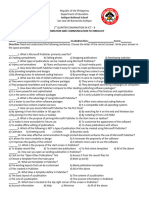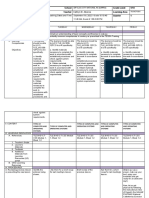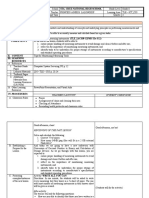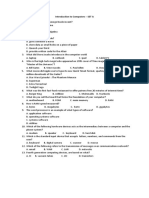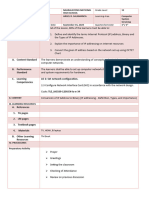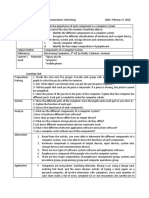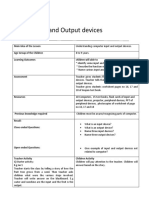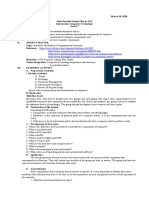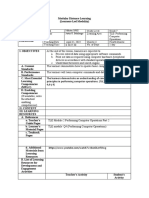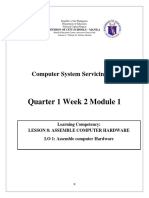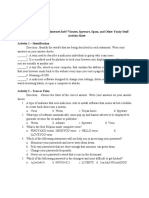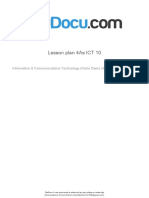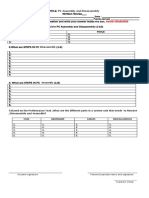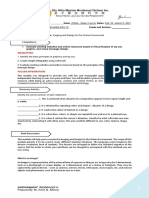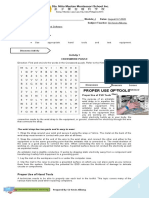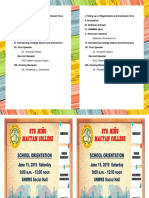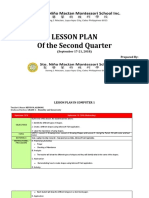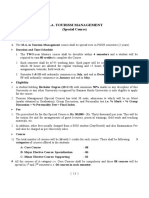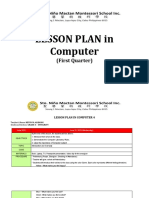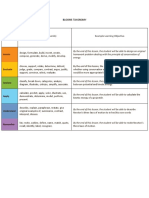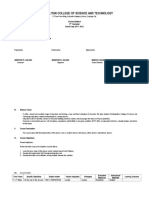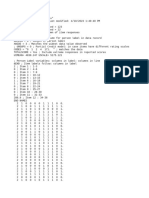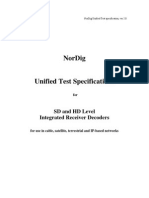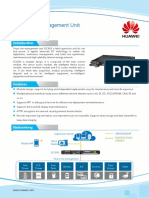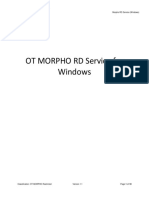0% found this document useful (0 votes)
550 views15 pagesLESSON PLAN - 4th Week - Computer
This lesson plan outlines a lesson on file management. The objectives are for students to use correct filenames, manage files and folders properly, and appreciate organizing files. Activities include identifying good and bad filenames, discussing how to create folders, and a hands-on activity where students will create folders with proper filenames. Student learning will be evaluated through a formative assessment worksheet and an assignment answering questions from the textbook.
Uploaded by
Kevin AlibongCopyright
© © All Rights Reserved
We take content rights seriously. If you suspect this is your content, claim it here.
Available Formats
Download as DOCX, PDF, TXT or read online on Scribd
0% found this document useful (0 votes)
550 views15 pagesLESSON PLAN - 4th Week - Computer
This lesson plan outlines a lesson on file management. The objectives are for students to use correct filenames, manage files and folders properly, and appreciate organizing files. Activities include identifying good and bad filenames, discussing how to create folders, and a hands-on activity where students will create folders with proper filenames. Student learning will be evaluated through a formative assessment worksheet and an assignment answering questions from the textbook.
Uploaded by
Kevin AlibongCopyright
© © All Rights Reserved
We take content rights seriously. If you suspect this is your content, claim it here.
Available Formats
Download as DOCX, PDF, TXT or read online on Scribd
/ 15

